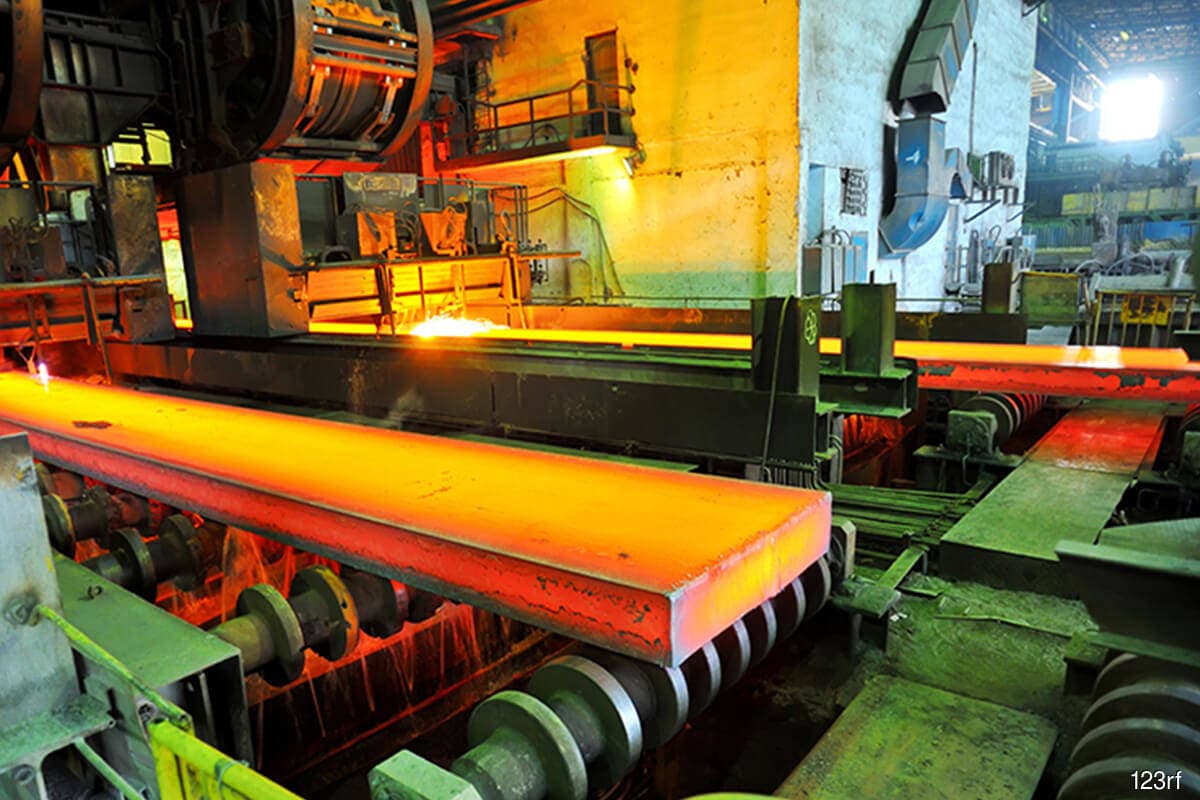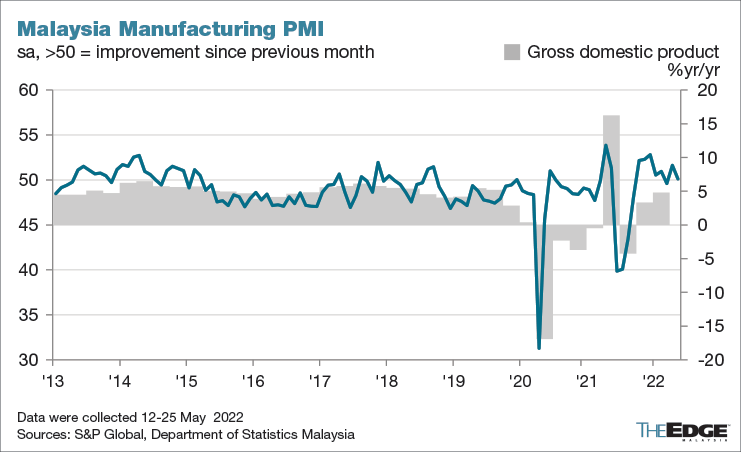
KUALA LUMPUR (June 1): Businesses signalled that the Malaysian manufacturing sector saw demand conditions soften midway through the second quarter of 2022 as productive capacity was hindered by price pressures and supply shortages.
S&P Global said there was a further moderation in production levels that was the fifth in as many months, while new order growth slowed sharply from April.
It said the lack of productive capacity also extended into the labour market as the rate of job shedding quickened to the sharpest seen since August 2020.
That said, businesses were increasingly confident that output would expand over the coming 12 months, extending the current sequence of optimism to 11 months and boding well for output and jobs growth to improve in coming months.
The seasonally adjusted S&P Global Malaysia Manufacturing Purchasing Managers’ Index fell from 51.6 in April to 50.1 in May.
While fractionally above the neutral 50.0 level, the latest reading was indicative of a broad stagnation in manufacturing operating conditions.
The historical relationship between the PMI and official statistics suggests that the upturn in GDP was beginning to ease in the second quarter of the year.
S&P Global said new order growth slowed sharply in the latest survey period.
It said while positive overall, the rate of growth was only fractionally above the neutral 50.0 threshold, falling 3.9 points in comparison to April.
As a result, output volumes were scaled back for the fifth consecutive month in May.
That said, the rate of moderation was only modest overall.
Manufacturers also reported that raw material shortages and rising prices had dampened client demand and production capacity.
Meanwhile, foreign demand for Malaysian manufactured goods continued to rise in May.
The rate of growth quickened from April to reach the sharpest for 13 months as some panellists reported strengthened demand in key markets outside of mainland China as the pandemic impact dissipated.
S&P Global said Malaysian manufacturers reported that employment levels moderated further in May.
The rate of job shedding was moderate, but the quickest reported since August 2020.
Where a decrease was reported, firms noted the sustained difficulty in sourcing foreign workers and the non-replacement of voluntary leavers.
Evidence of a lack of productive capacity was also apparent in a renewed rise in backlogs of work, which increased at the fastest pace for six months.
S&P Global chief business economist Chris Williamson said manufacturers continued to struggle in May against the headwinds of elevated price pressures and supply chain delays, as well as labour shortages.
He said lockdowns in mainland China in particular continue to aggravate the supply situation which, alongside difficulties sourcing workers, has led to a deteriorating factory production trend.
"However, companies have become more optimistic about the outlook.
“Optimism has been buoyed by stronger export sales and signs of a possible peaking of both supply delays and input cost inflation.
“Supply chains lengthened to the least extent for almost a year in May, and input costs rose at the slowest rate since last September; both welcome indications that the supply and inflation crisis may be starting to ease,” he said.

